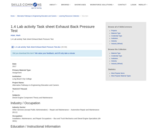
Exhaust back pressure test worksheet.
- Subject:
- Automotive Technology and Repair
- Career and Technical Education
- Material Type:
- Activity/Lab
- Provider:
- Skills Commons
- Author:
- Mark Adair
- Date Added:
- 08/17/2022

Exhaust back pressure test worksheet.
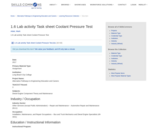
Test diesel engine for coolant pressure.
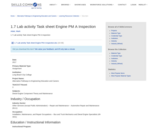
Automotive preventive maintenance inspection worksheet.
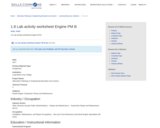
Automotive preventive maintenance inspection worksheet.
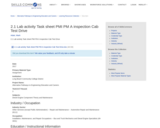
Truck cab preventive maintenance worksheet.
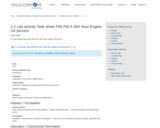
Activity for diesel engine oil change.
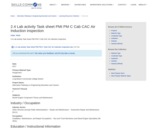
Air induction inspection worksheet.
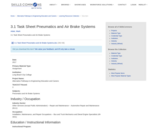
Pneumatics and air brake sysems worksheet.
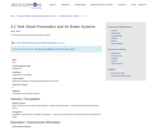
Questions regarding air brake systems.

Pneumatic and air brake systems worksheet.
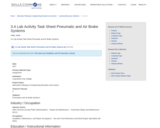
Pneumatic and air brake systems worksheet.

Pneumatic and air brake systems worksheet.
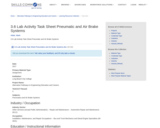
Pneumatic and air brake systems worksheet.
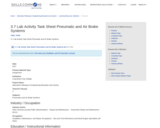
Pneumatic and air brake worksheet.

Acoustics (from Greek ακουστικός pronounced akoustikos meaning "of or for hearing, ready to hear") is the science that studies sound, in particular its production, transmission, and effects. The science of acoustics has many applications which are dependent upon the nature of the sound that is to be produced, transmitted or controlled.

Project-based course on the design of mechatronic devices to address needs identified by hospital-based clinicians and industry. Students work in teams to develop a mechatronic prototype. The lectures will cover the design of medical devices and robotics including sensors, actuators, and robots. The students will communicate with customers to understand design needs, then conduct study on prior art, intellectual property, due diligence, and idea conceptualization. Students will present ideas in class and to a broad audience from local industry. Students will also write a publication-quality final report, which they will be encouraged for publication submission.

Originally edited by Samuel B. Green and published in 1897, this book is an inventory of apples from John S. Harris. Apples are described to include origin, hardiness, color, size, and disease. This 2019 edition includes the transcribed text and original line drawings, and has been expanded to include a biography of John S. Harris. Professor James Luby introduces 21st century readers to this historical document.

This free electrical engineering/technology textbook provides a series of chapters covering electricity and electronics. The information provided is great for students, makers, and professionals who are looking for an application-centric coverage of this field.
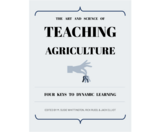
The Art and Science of Teaching Agriculture: Four Keys to Dynamic Learning is a 240-page methods of teaching book. Specifically, it is a collection of thoughts, best practices, strategies, and techniques for planning, delivering, and assessing teaching and learning. This resource is assembled from among the best teaching professors in agricultural communication, education, and leadership in America. The authors offer the opportunity to build confidence in planning, delivering, and assessing the depths of the variables inherent in learning for secondary and postsecondary educators in both formal and nonformal educational environments.
You will quickly grasp the four fundamental keys of solid, basic, time-tested formal and nonformal teaching: Laying the Foundation, Connecting with Students, Designing Instruction, and Applying Learning. These keys are shared with you through the unique voices of the authors to provide a multiperspective approach to teaching.
Are you reviewing or adopting this book for a course?
Please help us understand your use by filling out this form: https://bit.ly/teachagriculture_interest.
How to access this book
The main landing page for this book is https://doi.org/10.21061/teachagriculture.
The open textbook is freely available online in multiple formats, including: PDF, ePub, and Pressbooks (https://pressbooks.lib.vt.edu/teachagriculture)
A paperback print version (in color) is available for order here: https://www.amazon.com/Art-Science-Teaching-Agriculture-Learning/dp/1957213663.
ISBNs
ISBN (PDF): 978-1-957213-71-2
ISBN (Pressbooks): 978-1-957213-72-9
ISBN (EPUB): 978-1-957213-70-5
ISBN (print): 978-1-957213-66-8
Table of contents
The Discipline of Agricultural Education
Psychology of Learning
Principles of Teaching and Learning
Learning as Problem Solving
Inclusive Teaching
Dynamics of Teaching
Planning for Effective Instruction
Delivering Content With Technology
Assessing Agricultural Education
Applied Leadership Development through FFA
Supervised Agricultural Experiences
Effective Use of the Agriculture Laboratory Environment to Support Student Learning
Suggested citation
Whittington, M. Susie, Rick Rudd, and Jack Elliot, ed. (2023). The Art and Science of Teaching Agriculture: Four Keys to Dynamic Learning. Blacksburg: Virginia Tech Department of Agricultural, Leadership, and Community Education. https://doi.org/10.21061/teachagriculture. Licensed with CC BY NC 4.0 (https://creativecommons.org/licenses/by-nc/4.0/deed.en).
View errata: https://bit.ly/teachagriculture_errata
Report an error: https://bit.ly/teachagriculture_errors
Accessibility
Virginia Tech is committed to making its publications accessible in accordance with the Americans with Disabilities Act of 1990. The Open Education Initiative is committed to continuous improvement regarding accessibility. The text, images, headings, and links in the PDF and HTML versions of this text are tagged structurally and include alternative text, which allows for machine readability. Please contact openeducation@vt.edu if you are a person with a disability and have suggestions to make this book more accessible.
Illustration and cover design: Kindred Grey

9. Brave New World - AI/ML
The trifecta of globalization, urbanization and digitization have created new opportunities and challenges across our nation, cities, boroughs and urban centers. Cities are in a unique position at the center of commerce and technology becoming hubs for innovation and practical application of emerging technology. In this rapidly changing 24/7 digitized world, city governments worldwide are leveraging innovation and technology to become more effective, efficient, transparent and to be able to better plan for and anticipate the needs of its citizens, businesses and community organizations. This class will provide the framework for how cities and communities can become smarter and more accessible with technology and more connected.